
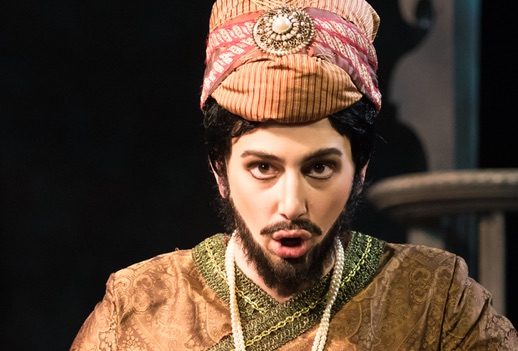
Allegra De Vita, a full ruby-rich mezzo.
Washington DC’s ever-adventurous Opera Lafayette has been coming to New York City regularly for a number of years and its latest program was performed Friday night at the Gerald W. Lynch Theater at John Jay College and brought together two rare works adapted from La Gerusalemme liberata: Alessandro Scarlatti’s Erminia and Francesco Geminiani’s La forêt enchantée. For all the company’s good intentions this opera-dance combo was not one of its happiest outings.
Tasso’s epic of the crusades has birthed countless musical works but these two would not rank among the finest. The Geminiani is an oddity, a half-hour dance- pantomime which Opera Lafayette entrusted to choreographer Anuradha Nehru and the Kalanidhi Dance company with which it collaborated several years ago in an entrancing production of Rameau’s Les Fêtes de l’Hymen et de l’Amour.
The tale surrounding the enchantment of Rinaldo and his troops by the sorceress Armida was transposed to India in the 17th century and the conflict became that of the Mughals versus the Marathas.
Geminiani’s 1754 score which sometimes resembles a much-extended concerto grosso accompanied a swiftly moving scenario and Nehru’s work most often tended toward pantomime rather than dance. Her thirteen performers capered delightfully and allowed the sprawling, non-linear five-act scenario to unfold seemlessly.
Opera Lafayette’s conductor Ryan Brown also played the solo first-violin part and led a vivacious if bumpy reading of the sporadically revived score. Fabio Biondi, also a great Scarlatti proponent, recently toured a staging by Davide Livermore of Forêt throughout Europe, and back in the day I owned an LP of the score (which I’ve always known as La foresta incantata although it premiered in Paris hence the French title) but I was happy to become reacquainted with the grand score on Friday.
The DC and New York performances of the Scarlatti were its first in the US and it was an odd choice perhaps as only the first act of the serenata survives. 1723’s Erminia is the composer’s final vocal composition after a remarkable career that included nearly 70 operas as well as scads of oratorios, cantatas, etc.
Some, particularly Donald Jay Grout, have argued strenuously for the importance of Scarlatti in the evolution of Italian opera, but I’ve yet to fully succumb to his works although René Jacobs’s recording makes a convincing case for La Griselda, the composer’s final opera. Perhaps the Paris Opéra’s upcoming production of Il Primo Omicidio will finally prove Alessandro’s big 21st century break.
Erminia may be seen as an adjunct to the story of Tancredi and Clorinda best known from Monteverdi’s Combattimento. The escaped princess Erminia absconds with Clorinda’s armor and is taken in by a shepherd (Pastore).

Richard Gammon’s simple production kept the complications of the 75-minute piece easy enough to follow but the small cast had enough trouble keeping up with the fierce vocal demands to lend much dramatic punch to the flimsy abbreviated plot. Scarlatti’s demanding music requires virtuosi but alas Opera Lafayette’s cast ranged from only adequate to very good.
Bass André Courville had a pleasant enough voice, grainy but solid throughout its range, but he was impossibly bland particularly in the extensive recitatives. Unfortunately he also struggled to keep up with Julia Dawson, the Erminia, in their impressive duet that is one of the score’s gems.
She had been impressive in Opera Lafayette’s recent production of Vivaldi’s Catone in Utica, but here was several times nearly defeated by Erminia’s impossible coloratura particularly during the extravagant aria which ended the act. Otherwise she showed a promising, shining high mezzo that while adept at the high baroque style never sounded completely comfortable in it.
Asitha Tennekoon as the tenor Polidoro displayed some nice dynamic shading but his bravura entrance aria with trumpet obbligato (a favorite Scarlatti device, witness Su le sponde del Tebro, probably his best-known vocal piece) found him struggling to keep up. He also lacked the musical-dramatic imagination to keep the listener involved throughout his very long (and beautiful) second da capo aria.
The most arresting and effective performer was Allegra De Vita in the castrato role of Tancredi. She was most at home in both recitative and aria revealing a full ruby-rich mezzo. Although her music wasn’t quite as florid as Erminia’s she showed a fine command of the fiery roulades of her jealousy aria. Her brusque stride and startlingly convincing makeup and beard momentarily led some in the audience to assume she might be an accomplished countertenor.
The off-stage choruses at the beginning of Erminia swerved painfully off-track—not a hopeful sign. Brown’s orchestra which did a good job in the Geminiani here sounded scattered and scrawny which surprised me as it had performed Vivaldi’s opera well several years ago. Scarlatti’s constantly inventive wind writing revealed the ensemble at its best but more often than not the strings lacked the attack and vigor that would have helped to bring the problematic piece to life
While applauding the impulse to explore a small corner of Scarlatti’s vast and unfamiliar vocal output, Erminia end up a frustrating choice. One hopes next time its meritorious search for neglected gems of the 17th and 18th centuries may produce more satisfying results.
Photos © 2018 Louis Forget















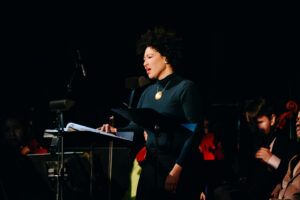
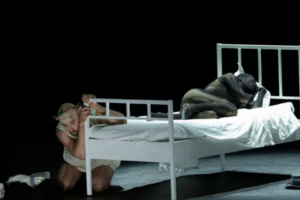
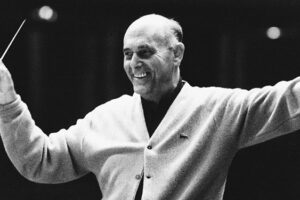
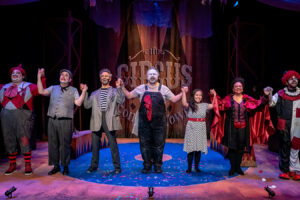






Comments